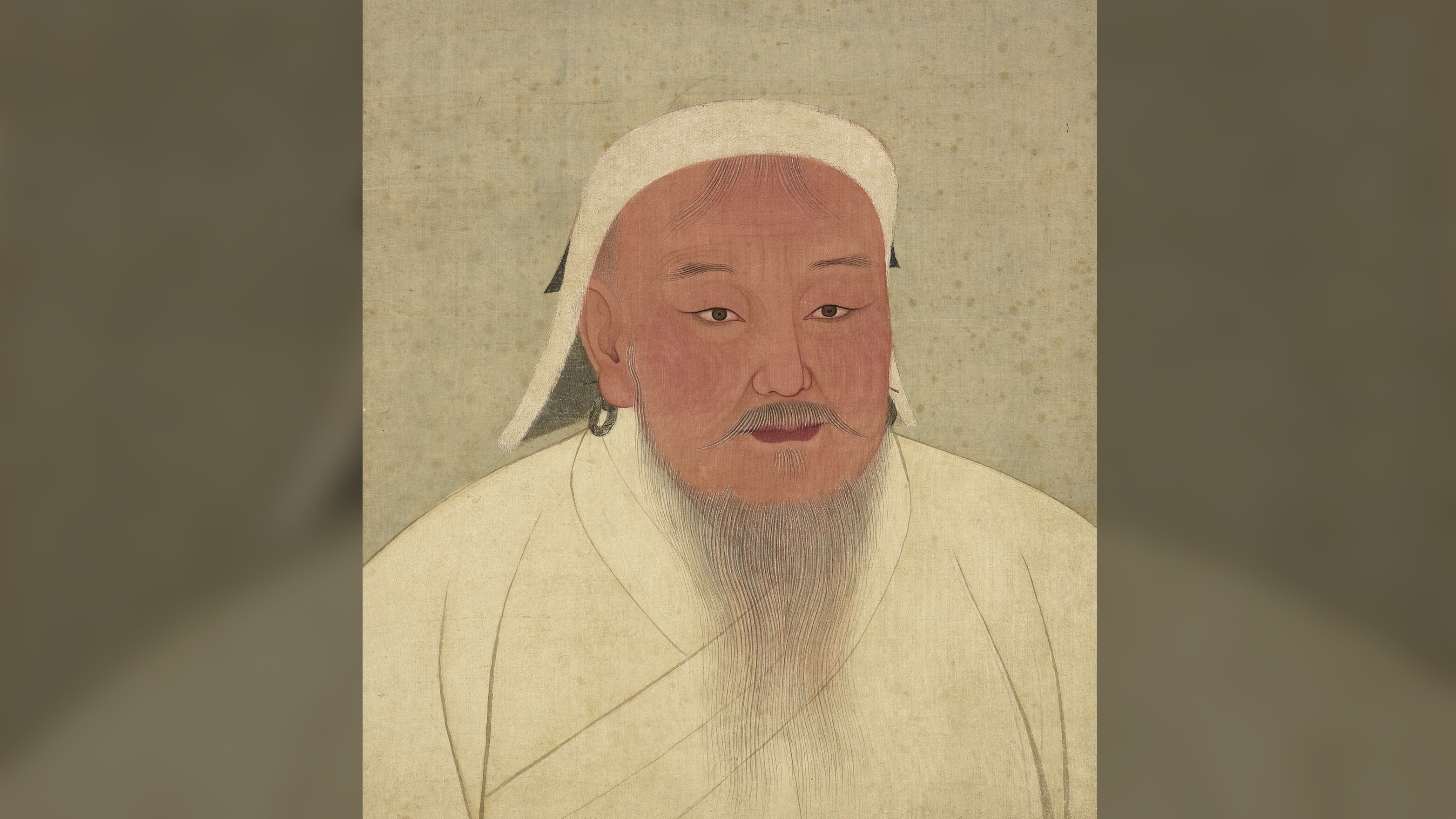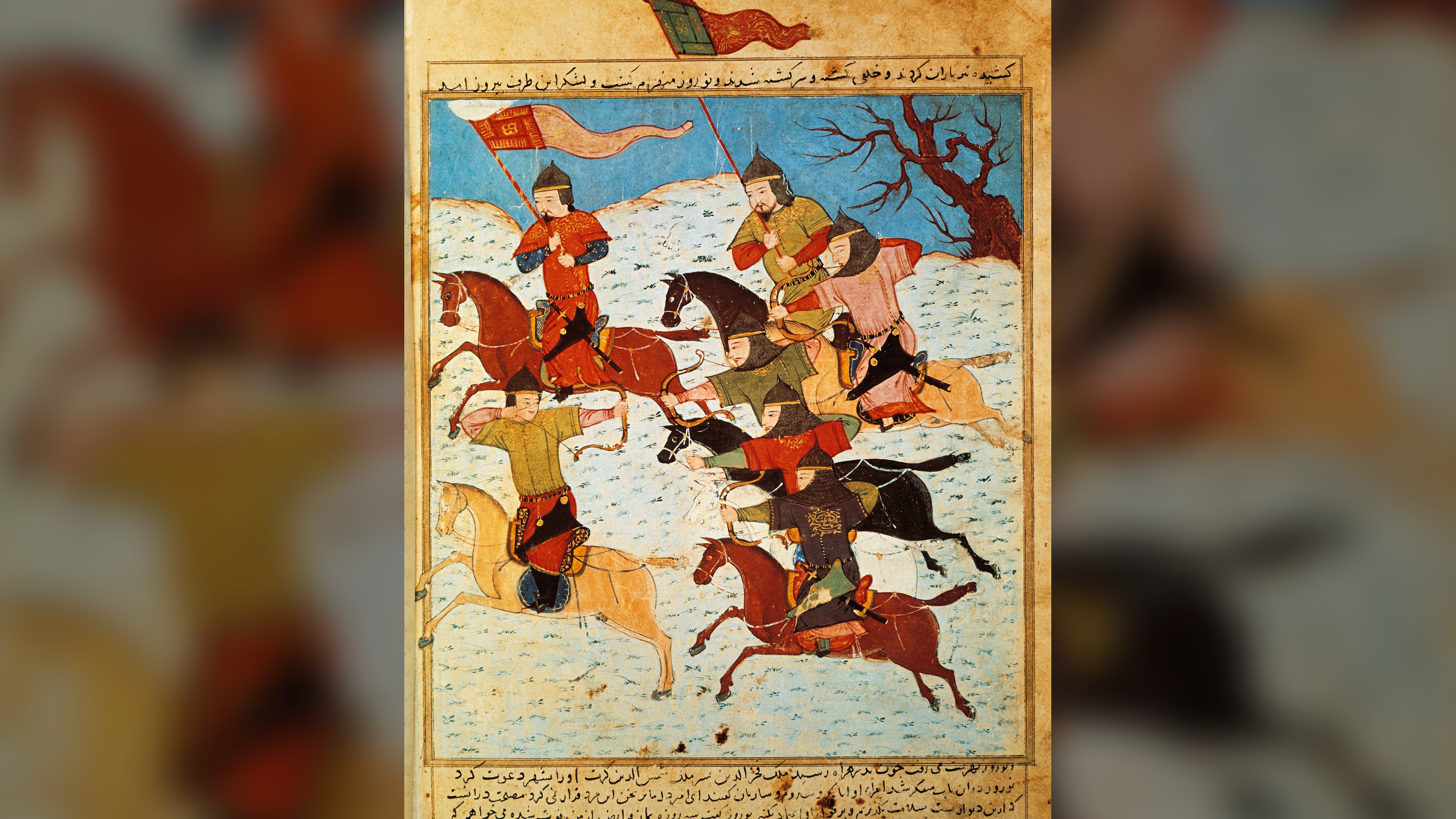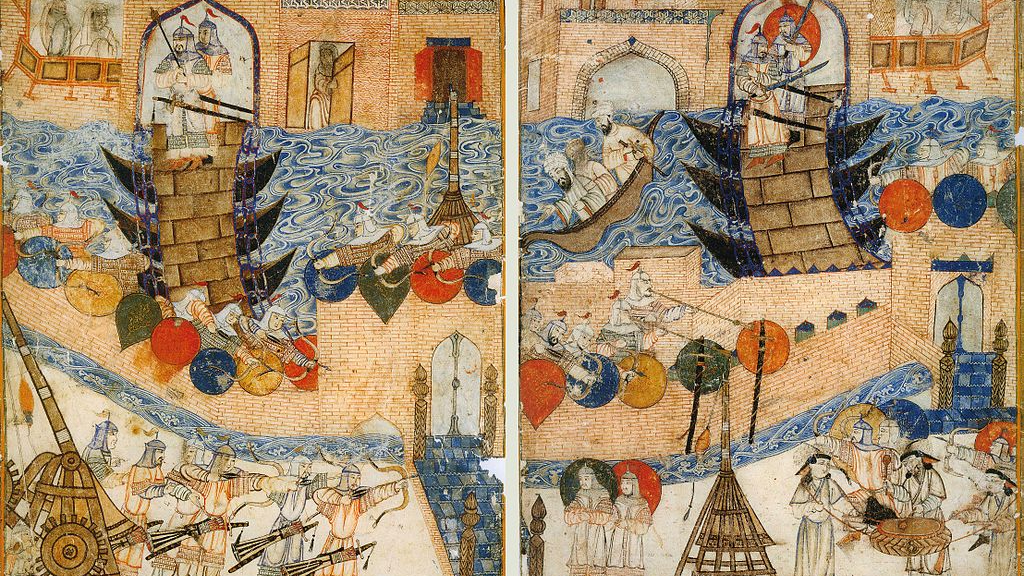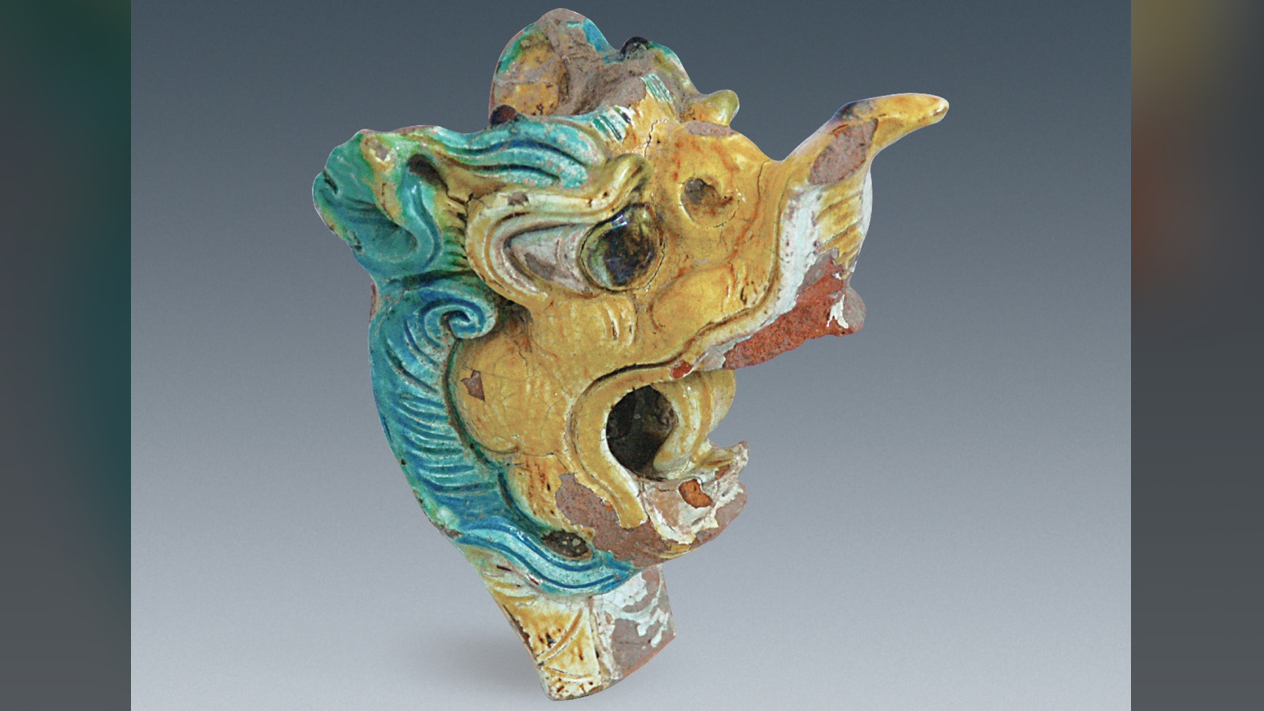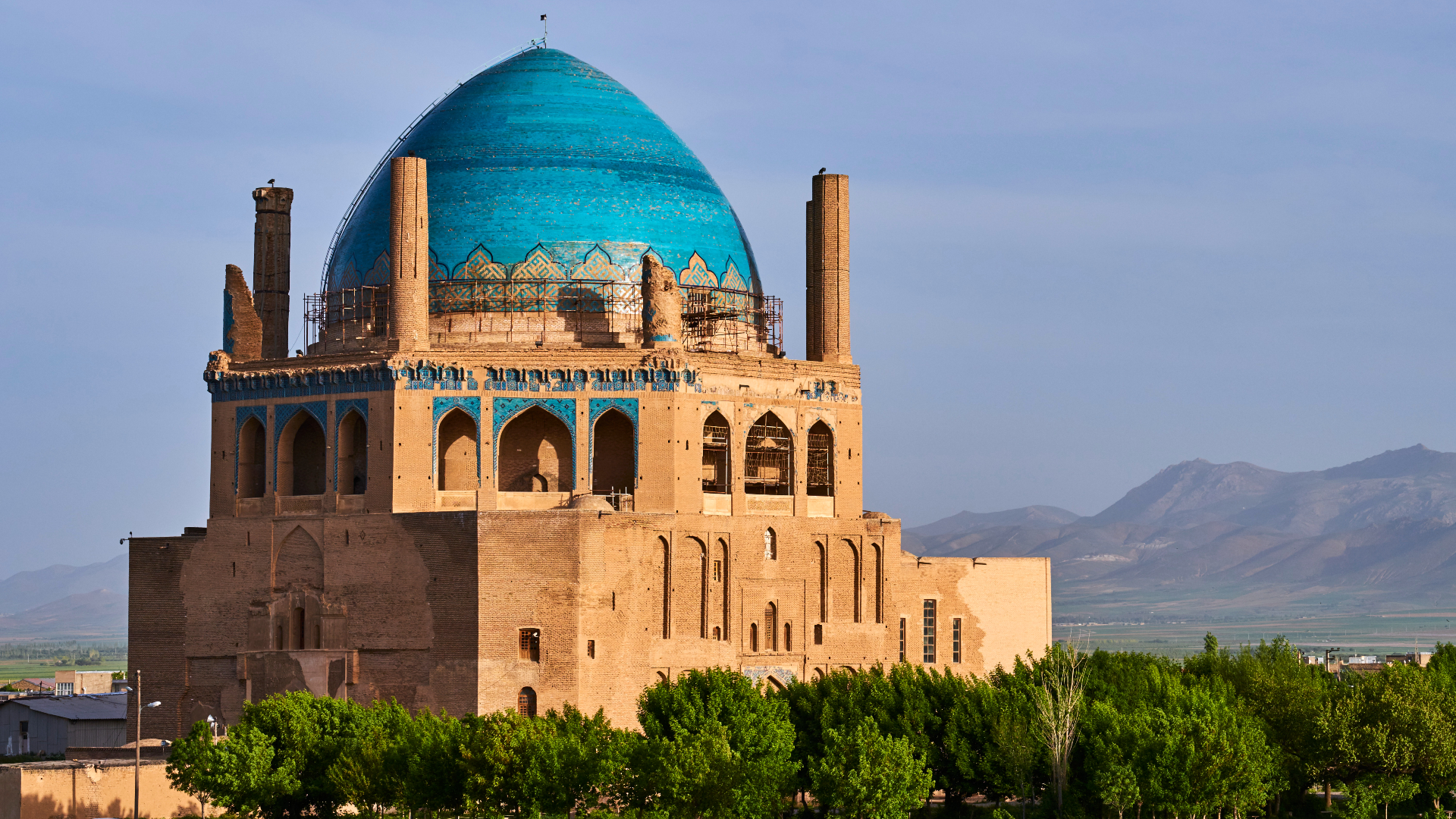What was the Mongol Empire?
The Mongol Empire was the largest contiguous empire ever.
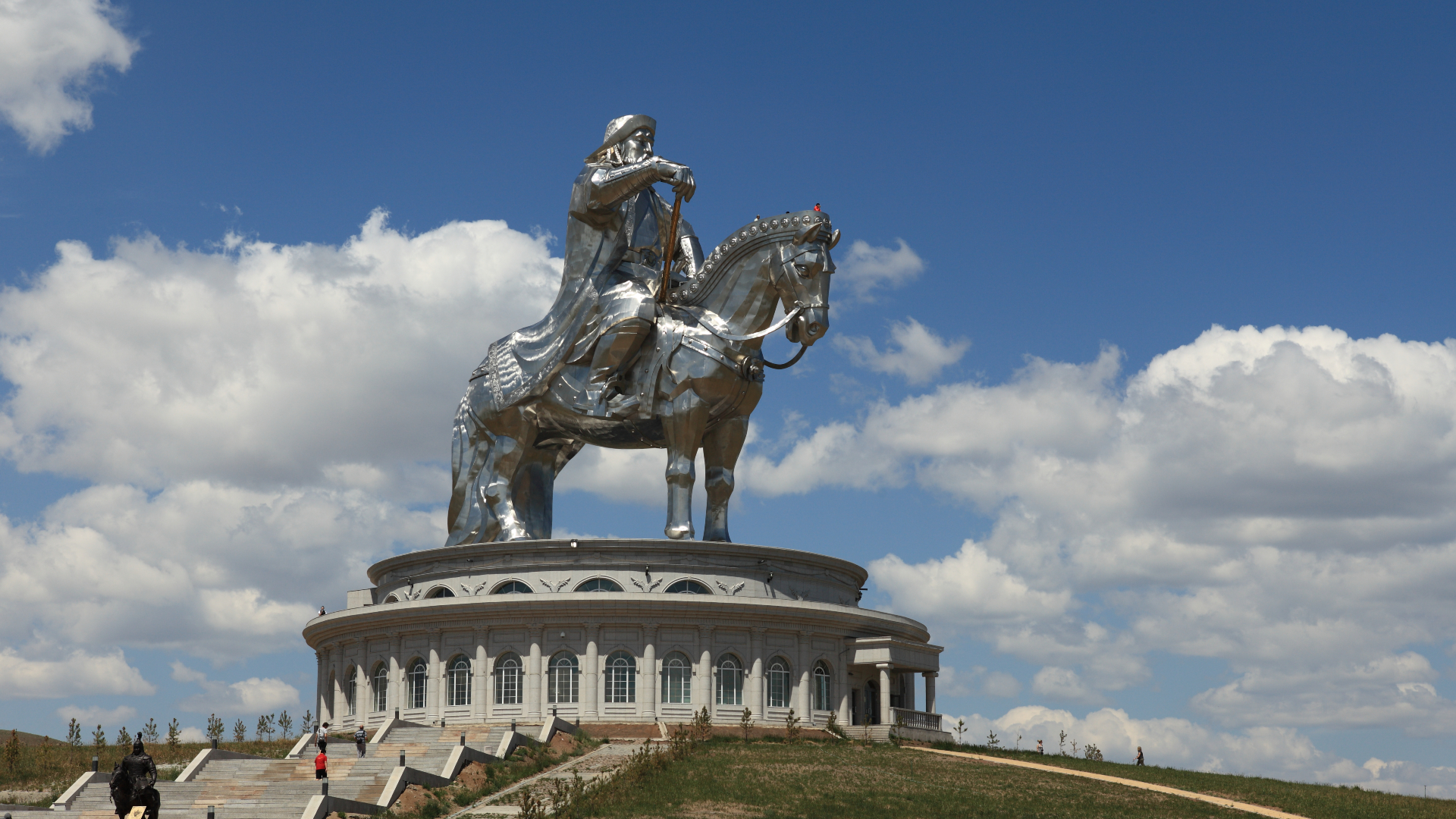
The Mongol Empire was a huge but short-lived empire that at its peak stretched from the Pacific Ocean to central Europe. But while vast — it was the largest contiguous land empire in history — it was united for only a few decades, before breaking apart into smaller empires in the 1260s as a result of civil war.
The Mongol Empire originated in the Eastern Steppe in 1206. Traditionally the Mongols were nomadic, herding large flocks of animals in Mongolia, and were highly skilled horsemen, wrote Marie Favereau, an associate professor of history at Paris Nanterre University, in her book "The Horde: How the Mongols changed the world" (The Belknap Press of Harvard University Press, 2021.
"Mongol horses were especially impressive," Favereau wrote. "When dismounted, these horses were trained to follow their riders and could return to camp on their own." In wintertime they fed themselves "by seeking grass under the snow."
The Mongols’ horses enabled them to travel vast distances and control a large swathe of territory. They also mastered the use of composite bows — powerful weapons that could be used on horseback — and other new technologies of the time, which gave them a strong advantage in battle, wrote Timothy May, a professor of Central Eurasian History at the University of North Georgia in his book "The Mongol Empire: A Historical Encyclopedia" (ABC-CLIO, 2016).
Genghis Khan
Genghis Khan (also spelled Chinggis Khan, Chingiz Khan or Tchingis Qaghan) was the founder of the Mongol Empire. Born around 1160 and originally named Temujin (also spelled Temuchin), his father, Yesukai, controlled a group of 40,000 families. Yesukai was killed by poison at some point when Temujin was still a child, and some of the families that had been loyal to his father deserted Temujin's group.
Temujin's family persevered, and Temujin eventually became leader of the group. He forged alliances and gradually built up his power while at times fighting other groups. By 1206 Temujin had conquered most of Mongolia and took the name Genghis Khan, which is sometimes translated as "universal ruler."
Genghis Khan's subsequent conquests took the world by storm. In 1215 he captured Zhongdu (near modern-day Beijing), the capital of China's Jin dynasty. In 1219, a Mongol army numbering as many as 200,000 troops campaigned against the shah of Khwarezm (based in modern-day Iran), conquering much of his territory.
Get the world’s most fascinating discoveries delivered straight to your inbox.
Genghis Khan's army made heavy use of cavalry, composite bows and feigned retreats to assist in its conquests, Morris Rossabi, an associate adjunct professor of East Asian languages and cultures at Columbia University, wrote in his book "Genghis Khan and the Mongol Empire" (University of Washington Press, 2009). The Mongolians didn't have much experience in siege warfare prior to Genghis Khan's campaigns and had to bring in foreign experts to provide the necessary skills, Rossabi noted.
Genghis Khan's campaigns may have been helped by good environmental conditions in Mongolia. A study published in 2014 in the "Proceedings of the National Academy of Sciences" found that from 1211 to 1225 the climate in Mongolia was unusually moist — leading to more grassland activity. This may have helped fuel Genghis Khan's conquests as his army relied heavily on cavalry, which necessitated good pasture for horses.
"The warm and consistently wet conditions of the early 13th century would have led to high grassland productivity and allowed for increases in domesticated livestock, including horses," a team of scientists wrote in the journal article. "Wet and warm conditions enabled the Mongol leadership to concentrate political and military power in designated localities," something that was important "in the successful mobilization of nomadic power in [Genghis Khan's] military expeditions."
Genghis Khan also instigated reforms of the Mongol Empire's management. He had Uyghur scribes, a people who live in central Asia that the Mongols conquered, created a writing system for the Mongolian language that was based on the Uyghur writing script. He also made administrative changes to his growing empire.
"Once he had conquered territories beyond Mongolia, he instituted a more sophisticated administrative structure and a regular system of taxation," Rossabi wrote. "Recruiting captured Turks, Chinese and others, he began to devise a more stable system that could contribute to a more orderly government, with specialized official positions."
The political institutions included a "quriltai" (also spelled kurultai), where the empire's political elites would gather and Genghis Khan would give assignments, rewards and punishments, ). Khan's government also included a "Keshig," which was both a personal guard and inner circle of the emperor's comrades. The most important aspect of his government was the "golden lineage" (sometimes called Borjigid-Kiyad), which consisted of Khan and his descendants. According to Mongol law, only members of this golden lineage could become leader of the Mongols, Favereau wrote.
People in the territories that Genghis Khan captured were invited to join his army, making it larger and providing expertise in tactics and weapons that the Mongols lacked. "The Mongols' ability to absorb people was the great strength of their military organization," Favereau wrote.
Khan died in 1227 — possibly of bubonic plague, recent research suggests. Ögedei, the third-oldest son of Genghis Khan, and his designated heir, became the "great khan," the leader of the Mongols.
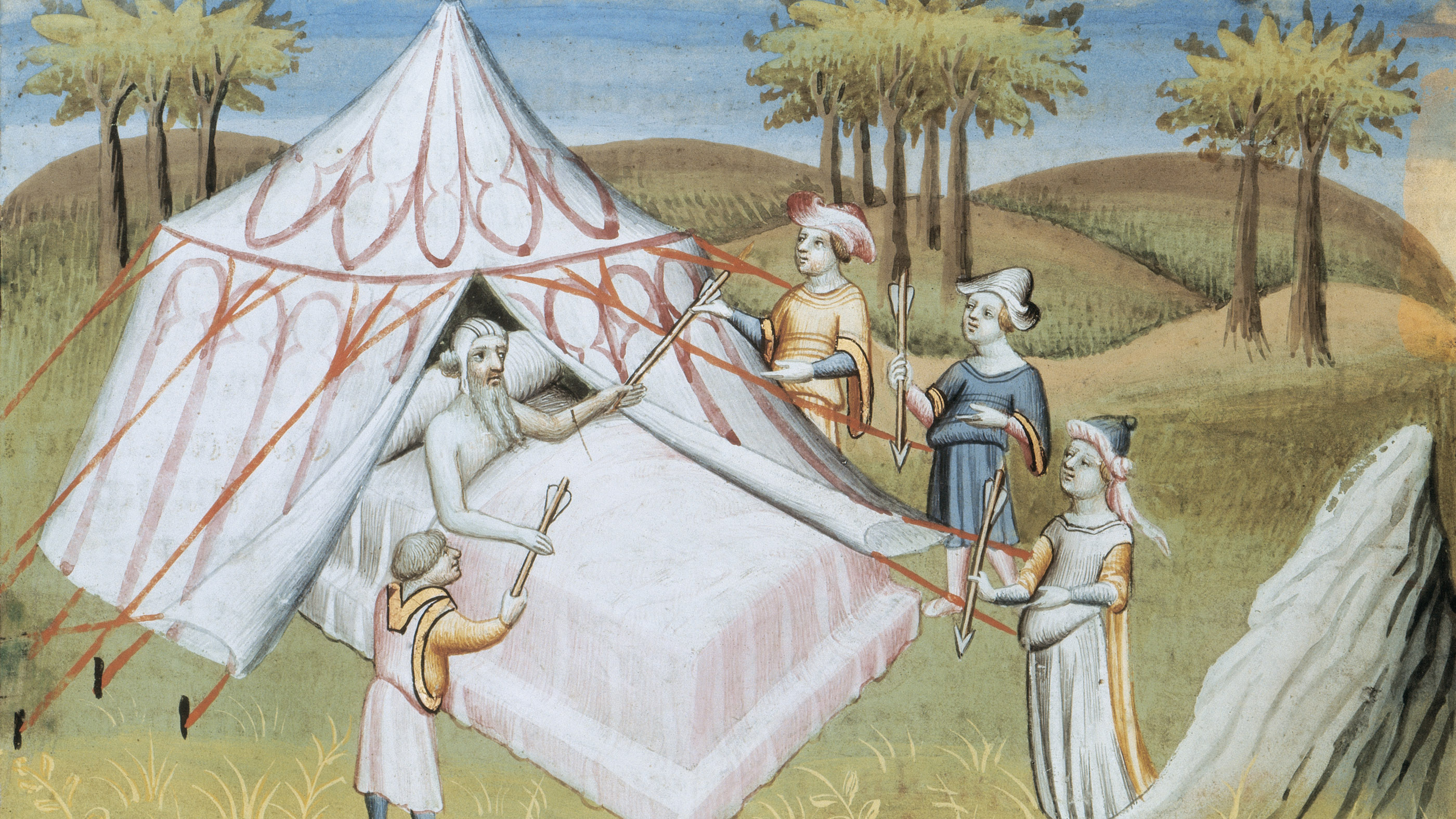
Genghis Khan's successors
Under Ögedai, the Mongols spread further west and reached central Europe by 1241, fighting battles in Hungary and Germany. This was as far west as the Mongols would go. Scholars still debate the reasons why the Mongols didn't push deeper into Europe, but a lack of pasture land, the presence of numerous fortified cities, harsh winters and the death of Ögedai Khan in December 1241 are possible factors, Favereau wrote.
Following Ögedai's death, the succession was disputed between a number of claimants, and it wasn't until 1246 that Güyük Khan, one of Genghis Khan's grandsons, was enthroned as Ögedai's successor.. By this point, the power of the Mongol ruler had begun to fragment. Batu Khan, who led Mongol forces in Europe, refused to attend the meeting that led to Güyük Khan's selection, and the two were on the verge of civil war when Guyük died in 1248. "Güyük appears to have spent his brief reign in preparations for a struggle with Batu," Peter Jackson, a professor of medieval history at Keele University in the U.K., wrote in an article published online in Encyclopaedia Iranica.
Again, deciding the next Mongol ruler was a source of dispute. Oghul Qaimish, the widow of Güyük Khan, attempted to hold power as regent. She was opposed by Batu Khan and was deposed and killed in 1251. Batu didn't claim the throne for himself and instead supported Möngke Khan, Timothy May, a professor of central Eurasian history at the University of North Georgia, wrote in an article published in the book).
Möngke Khan ascended the ethrone in 1251, and most scholars today regard him as the last Mongol ruler who had some degree of authority over the entire Mongol Empire. Möngke Khan brought in a number of administrative reforms, including a clampdown on corruption, May wrote. His reforms also included changes to the tax system and a census of the entire Mongol Empire.
Conquest and expansion continued under Möngke Khan, the most famous (and controversial) of which was the siege and subsequent looting of Baghdad in 1258. The attack was led by Hulagu Khan, one of Genghis Khan's grandsons.
Baghdad was the seat of power of the Abbasid Caliphate and was led by Caliph Al-Musta'sim Billah. His position as caliph made him, to some Muslims at least in theory, the most senior religious leader in Islam, wrote Alexander Gillespie, a professor of law at the University of Waikato, New Zealand in his book "The Causes of War: Volume II" (Bloomsbury, 2016). The caliphate was "in theory, the theological core of Islam" wrote Gillespie.
Despite the fact that he controlled little more than Baghdad itself, Al-Musta'sim Billah refused to formally submit to the Mongols. He knew that the Mongols would attack other Muslim lands and that if he submitted to them, it would give the appearance that the caliph approved of these attacks, Favereau wrote.
The Mongols laid siege to the city and captured it about two weeks later. Hulagu's armies looted Baghdad and destroyed the "House of Wisdom," one of the largest libraries in the world at that time. Some historical records claim that the Mongols threw so many books from Baghdad's libraries into the Tigris River that people could walk across the river by crossing the books. Just how many books were destroyed is a matter of debate among modern-day historians, but the city was devastated and the caliph was executed.
Even among the Mongols, the actions of Hulagu and his army were controversial. One of the most senior Mongol commanders, Berke Khan, who had converted to Islam in 1252, reportedly condemned the decision to execute the caliph, Favereau wrote. Historical records say that in 1259 Berke Khan wrote a letter to Möngke Khan, vowing to hold Hulagu "to account for so much innocent blood." However, Möngke Khan died before the letter reached him.
Mongol civil war
When Möngke Khan died in August 1259, there was no agreed successor; a civil war broke out, which fractured the Mongol Empire permanently. Möngke Khan's "brothers Arigh [sometimes spelled Ariq] Böke and Qubilai each claimed the mantle of the great khan and organized their own enthronement [councils]," Favereau wrote.
Different Mongols leaders took different sides and began to fight each other. In 1263, Böke was forced to surrender. While Qubilai [also known as Kublai Khan] prevailed, he was not recognized as the great khan by all the different Mongol leaders and was not able to exercise authority over the entirety of the Mongol Empire.
This means that for all practical purposes the Mongol Empire was now split into a number of smaller empires that ruled different stretches of land across Asia and Europe.
Yuan dynasty
Perhaps the best known of the smaller Mongol empires was China's "Yuan dynasty" led by Kublai Khan. In 1263, this dynasty controlled much of north and central China, but the south of China was controlled by the "Southern Song dynasty," ruled by a Chinese emperor.
Kublai's troops continued pushing south, and in 1279 the last Southern Song forces were defeated and the emperor was either killed or committed suicide. China then became unified under the rule of the Mongol-controlled Yuan dynasty, with Kublai Khan in charge.
Perhaps the Mongols' most famous act in China was the construction of the city of Xanadu (also known as Shangdu). Used as a summer capital by the Yuan dynasty rulers, it became romanticized in popular culture. It had a palatial district, an imperial city and an outer city and occupied an area of about 484,000 square meters [5.2 million square feet]. Recent archaeological excavations unearthed dragons that decorated its palaces.
Marco Polo supposedly visited Xanadu around 1275 and claimed to have served Kublai Khan as an official, rising to the rank of governor. Whether Marco Polo ever went to Xanadu or served Kublai Khan is a source of debate among modern-day historians.
Ultimately, the Yuan dynasty was short-lived. A rebellion broke out in 1368, which resulted in the destruction of Xanadu. This pushed the Mongol rulers back into Mongolia, allowing a new Chinese dynasty — the Ming dynasty — to take control of China.
Ilkhanate
Another Mongol empire that sprung up after the Mongol civil war was the Ilkhanate, which in 1263 ruled an area stretching from Iran to parts of modern-day Turkey. Its rulers converted to Islam in 1295. Like the Yuan dynasty, the Ilkhanate was short-lived, collapsing during the mid-14th century; its last remnants were destroyed in 1357.
Also like the Yuan dynasty, the Ilkhanate is best known for its architectural achievements. The most famous example is a mausoleum constructed for Öljaitü, one of Ilkhanate's rulers, in the city of Soltaniyeh in Iran. Completed in 1312, it is crowned with a blue faience dome that is 164 feet (50 meters) high and surrounded by eight minarets. It is now a World Heritage Site. "The Mausoleum of Oljaytu is an essential link and key monument in the development of Islamic architecture in central and western Asia," the UNESCO World Heritage Centre says on its website.
Golden Horde
The name "Golden Horde" is used to describe the Mongol empire that controlled parts of Europe. In 1263 it controlled parts of Eastern Europe, the Caucasus and what is now western Russia. Favereau noted that the Golden Horde was sometimes in conflict with the Ilkhanate and the Chagatai Khanate, two other Mongol empires that formed after the civil war.
The Golden Horde maintained good relations with European powers such as the state of Genoa in Italy, and often used the Genoese as trading intermediaries, Favereau wrote. The Golden Horde also tried to control the princes of the cities it ruled, such as Moscow, and use them as intermediaries to collect taxes. At times the princes cooperated well with the Golden Horde while at other times they launched rebellions that the Golden Horde had to put down.
The mid to late 14th century brought a number of problems to the Golden Horde including the Black Death, rebellions and squabbles over who should lead the horde, which saw it fragment. The end of the Yuan dynasty and Ilkhanate had demonstrated to people that the Mongols could be defeated, Favereau noted. In 1378, a man named Tokhtamysh was able to reunify the Golden Horde after a period of civil war.
The late 14th century saw the Golden Horde come under attack from the Timurid Empire, which originated from Iran and central Asia and was led by a ruler named Timur. In 1395, Timur's forces won a decisive victory at the Battle of the Terek River in the Caucasus, which led to the destruction of much of the Golden Horde’s territory. The remains of the Golden Horde disintegrated during the 15th century.
Chagatai Khanate
The longest-lasting of the post-civil war Mongols empires was the Chagatai Khanate that ruled over a large amount of land in central Asia. The Chagatai Khanate acknowledged the authority of Kublai Khan as "great khan" for a brief time before breaking away in the late 1260s and eventually waging war against the Yuan dynasty, Zhanat Kundakbayeva, a professor at Al-Farabi Kazakh National University in Kazakhstan, wrote in their book "The History of Kazakhstan from the Earliest Period to the Present Time. Volume I" (LitRes, 2022).
The Chagatai Khanate lasted until the end of the 17th century. In the 1360s the western half of the khanate was lost during a war with the Timurid Empire. While the khanate was ruled by a "Mongol" leader, over time it became Turkic linguistically, noted Kundakbayeva. Its name gradually changed, and it was known as the "Yarkent Khanate" in its final days. The last khan, Akbash Khan, was deposed in 1705.
Bibliography
Choi, C. (2021) The story you heard about Genghis Khan's death is probably all wrong, Live Science https://www.livescience.com/genghis-khan-death-cause-revealed.html
Favereau, M. "The Horde: How the Mongols changed the world" The Belknap Press of Harvard University Press, 2021
Gillespie, A "The Causes of War: Volume II" Bloomsbury, 2016
Jackson, P. (2012) "Güyük Khan" Encyclopædia Iranica https://www.iranicaonline.org/
Kundakbayeva, Z. "The History of Kazakhstan from the Earliest Period to the Present Time. Volume I" LitRes, 2022
Pederson, Neil et al "Pluvials, droughts, the Mongol Empire, and modern Mongolia" Proceedings of the National Academy of Sciences 111 (12) 4375-4379
https://www.pnas.org/doi/10.1073/pnas.1318677111
Rossabi, M. "Genghis Khan and the Mongol Empire" University of Washington Press, 2009
Timothy M. (ed) "The Mongol Empire: A Historical Encyclopedia" ABC-CLIO, 2016
World Heritage Centre, "Soltaniyeh" accessed 04/13/2022 https://whc.unesco.org/en/list/1188/
Timeline
1160 Temujin (later known as Genghis Khan) is born around this year.
1206 Temujin has conquered most of Mongolia and takes the name "Genghis Khan," which is sometimes translated as "universal ruler"
1215 Mongols take Zhongdu (modern-day Beijing), the capital of the Jin dynasty
1219 A Mongol army of 200,000 conquers much of shah of Khwarezm's territory (in modern-day Iran)
August 1227 Genghis Khan dies, possibly of bubonic plague. Ögedai Khan, Genghis's third-oldest son, becomes leader of the Mongols.
1241 The Mongols reach central Europe, fighting battles in what is now Hungary and Germany. This is the furthest west that the Mongols ever advance.
December 1241 Ögedai Khan dies. His succession is contested.
1246 Güyük Khan is enthroned as great khan. A rival, Batu Khan, opposes this, and the two edge towards civil war.
1248 Güyük Khan dies; his widow Oghul Qaimish attempts to rule as a regent
1251 Oghul Qaimish is deposed and killed. Möngke Khan becomes leader of the Mongols. He is the last great khan to exercise any level of authority throughout the entire Mongol Empire.
1258 The siege of Baghdad occurs, followed by the looting and destruction of much of the city and the execution of Caliph Al-Musta'sim Billah. The House of Wisdom, one of the largest libraries in the world, is destroyed.
August 1259 Möngke Khan dies. A civil war breaks out between his brothers Arigh Böke and Kublai over who will become great khan.
1263 Arigh Böke is forced to surrender and Kublai becomes Mongol leader. However, Kublai's leadership is not accepted by all Mongol groups, and the Mongol Empire effectively breaks apart into several smaller empires.
1275 Around this time Marco Polo supposedly visits China and meets Kublai Khan
1279 The Yuan dynasty destroys last remnants of the southern Song dynasty, and China is reunited under Mongol rule
1295 Ilkhanate dynasty rulers convert to Islam
1312 Mausoleum for Ilkhanate ruler Öljaitü is completed
1357 The last remnants of the Ilkhanate is destroyed
1368 A rebellion in China results in the collapse of the Yuan dynasty. Xanadu is destroyed and the Mongols are forced to retreat to Mongolia.
1378 Tokhtamysh reunifies the Golden Horde after period of civil war
1395 The Golden Horde is crushed at the Battle of the Terek River by Timurid Empire forces. The following century sees what is left of the horde disintegrate.
1705 The last khan of the Chagatai Khanate is deposed, and the khanate comes to an end.

Owen Jarus is a regular contributor to Live Science who writes about archaeology and humans' past. He has also written for The Independent (UK), The Canadian Press (CP) and The Associated Press (AP), among others. Owen has a bachelor of arts degree from the University of Toronto and a journalism degree from Ryerson University.


